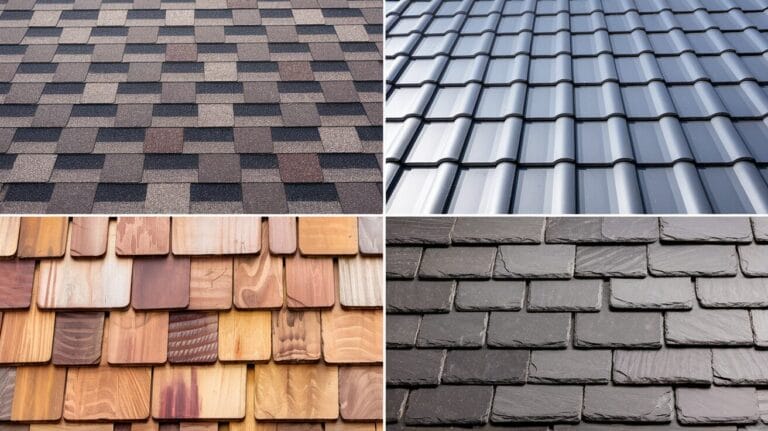
Replacing a roof is a significant investment, but ensuring your home’s safety and integrity is also necessary. Over time, roofs can deteriorate due to various factors, such as weather conditions, age, and maintenance neglect. Knowing when to replace your roof can save you from costly repairs and potential damage to your property.
In this post, we will discuss the signs you should not ignore when considering a roof replacement, the average lifespan of different types of roofs, and the decision to change your roof after its lifespan is up.
Signs That Indicate It’s Time to Replace Your Roof
If you notice any of the following signs, it is likely time to replace your roof:
Buckling or Warping Roof Materials: Buckling or warping roof materials are a clear indication of an underlying problem. This could be caused by moisture damage, improper installation, or age-related wear and tear. When roof materials start to buckle or warp, it compromises the structural integrity of your roof and leaves it vulnerable to leaks and further damage.
Visible Roof Leaks: Visible roof leaks are an obvious sign that your roof needs replacement. If you notice water stains on your ceiling or walls, it means that your roof is no longer effectively keeping out water. Leaks can cause significant damage to your home’s interior and should be addressed promptly by replacing the roof.
Increased Energy Bills: If you’ve noticed a sudden increase in your energy bills, it could be due to poor insulation caused by an aging or damaged roof. As a roof ages, it becomes less effective at regulating temperature, leading to higher heating and cooling costs. Replacing your roof can improve energy efficiency and save you money in the long run.
Pest Infestations: Pests, such as rats, squirrels, or insects, can find their way into your home through openings or damaged areas in your roof. If you have noticed an increase in pest activity in your attic or ceiling, it may be a sign of roof damage. Replacing your roof will not only keep pests out but also prevent further infestations and potential structural damage.
Widespread Shingle Damage: Damaged or missing shingles are a common sign that your roof is in need of replacement. Shingles play a crucial role in protecting your roof from moisture and other elements. When shingles are cracked, curled, or missing, they can no longer provide adequate protection, leaving your roof vulnerable to leaks and other damage.
Sagging or Uneven Roof: If you notice a sagging or uneven roofline, it is a serious indication that your roof’s structural integrity has been compromised. This could be due to water damage, rotting wood, or weakened supports. A sagging roof can lead to further structural issues and should be addressed immediately by replacing the roof.
Water Stains on Ceilings or Walls: Water stains on ceilings or walls are a sign that water has penetrated your roof and is causing damage inside your home. These stains can worsen over time and may indicate a more significant underlying issue with your roof. Replacing your roof is crucial to prevent further water damage and maintain the structural integrity of your home.
Excessive Granule Loss in Gutters: If you notice an excessive amount of granules accumulating in your gutters, it may be a sign that your roof is nearing the end of its lifespan. Granule loss can occur as asphalt shingles age and deteriorate. The loss of granules can leave your roof vulnerable to UV damage and reduce its efficiency in protecting your home from the elements.
Rotting or Decaying Roof Materials: Rotted or decaying roof materials are a clear indication that your roof needs replacing. Moisture damage, exposure to harsh weather conditions, and age can cause wood, shingles, or other roof materials to deteriorate. It’s important to replace these damaged materials to prevent further structural issues and potential leaks.
Moss, Mold, or Fungi Indications: If you notice moss, mold, or fungi growing on your roof, it indicates excessive moisture and poor ventilation. These growths can deteriorate your roof materials and compromise its integrity. Replacing your roof will eliminate the conditions that promote the growth of moss, mold, or fungi and help maintain a healthy environment in your home.
Know The Age Of Your Roof
Knowing the age of your roof is essential in determining whether it needs replacement. Different types of roofs have varying lifespans. Here are the average lifespans of common roofing materials:
- Asphalt roll roof: 5 to 10 years
- Composite shingle roof: 15 years
- Wood shingle roof: approximately 25 years
- Standing seam metal roof: 20 to 50 years
- Wood shake shingle roof: 35 to 40 years
- Clay tile roof / Spanish tile roof: 40 to 50 years (Underlayment lasts approximately 15 years)
- Slate roof: 100+ years
It’s important to note that these are average lifespans and can vary depending on factors such as climate, installation quality, and maintenance.
If your roof is nearing or has exceeded its expected lifespan, it is advisable to consider a replacement to avoid potential issues and protect your home.



